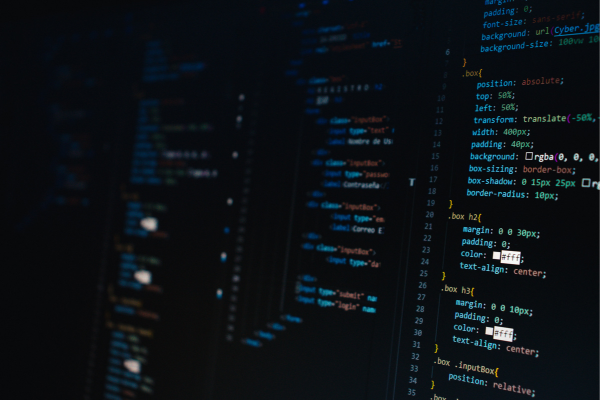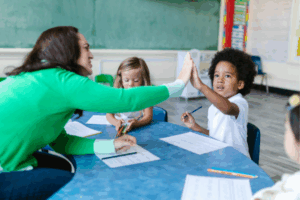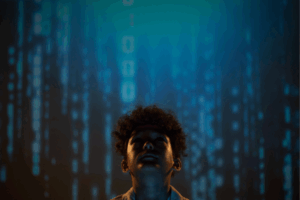The Growing Importance of Teaching Kids to Code
In today’s digital world, coding has become a foundational skill—much like reading, writing, or math. Whether children dream of becoming software developers, scientists, engineers, or artists, learning how to code helps them think logically, solve problems creatively, and express their ideas through technology. As more schools and families embrace STEM education, coding is no longer just for computer whizzes—it’s a vital part of modern learning for kids of all backgrounds.
Overview of Popular Beginner-Friendly Coding Languages
Thankfully, kids don’t have to start with complex programming right away. There are several beginner-friendly languages designed specifically to make learning fun and accessible. Among the most popular are Scratch, Blockly, and Python. Each offers a unique approach—from colorful visual blocks to real-world coding syntax—making it easier for kids to take their first steps in the programming world.
Purpose of the Article
This article aims to guide parents, educators, and curious learners through the key differences between Scratch, Blockly, and Python. We’ll explore their features, ideal age groups, learning curves, and real-world applications—helping you choose the best starting point based on your child’s age, interests, and learning style.
Why Learning to Code Matters for Kids
Develops Problem-Solving, Logic, and Creativity
Coding is more than typing commands—it’s a way of thinking. When kids code, they learn how to break big challenges into smaller steps, identify patterns, and solve problems through logic and experimentation. Whether they’re designing a game or animating a story, coding exercises both the analytical and creative sides of the brain, helping children become more well-rounded thinkers.
Prepares Children for Future STEM Opportunities
As technology continues to reshape every industry, coding is becoming a core skill in science, technology, engineering, and mathematics (STEM) careers. Learning to code early gives children a head start, making them more confident and capable in future educational settings. Even if they don’t pursue a tech career, understanding the basics of how software and systems work prepares them to thrive in a digital-first world.
Builds Confidence Through Creating Projects and Games
One of the most exciting aspects of coding is seeing your ideas come to life. Kids can build interactive games, animations, websites, or even robots—right from their laptops or tablets. This hands-on creation builds a deep sense of pride and accomplishment. Each successful project boosts confidence and encourages kids to keep learning, iterating, and pushing their skills further.
What Is Scratch?
Visual Drag-and-Drop Interface Designed for Kids
Scratch is a beginner-friendly programming language developed by MIT that uses a colorful, drag-and-drop interface. Instead of writing code, kids piece together visual blocks that represent actions, events, and logic. This makes learning programming intuitive and frustration-free—no syntax errors, just creativity and logic in action.
Age Range and Ideal Learners (Ages 7–12)
Scratch is designed primarily for children between the ages of 7 and 12, though older beginners can enjoy it too. It’s perfect for learners who are just starting out and may not yet be ready for text-based coding. Younger kids can also start with ScratchJr, a simplified version for ages 5–7.
Key Features: Animation, Game Design, Storytelling
Scratch empowers kids to bring their ideas to life through:
- Interactive games they can design and play
- Animated stories using characters called “sprites”
- Art and music integration, letting creativity shine through every project
- A global online community where kids can share their creations and remix others’ work
This combination of creativity, logic, and community makes Scratch one of the most engaging ways for kids to get started with coding.
Pros and Cons
Pros:
- Very beginner-friendly with no typing needed
- Encourages creativity and storytelling
- Large, supportive online community
- Completely free and runs in most web browsers
Cons:
- Not ideal for learning traditional coding syntax
- Limited for older kids or advanced learners
- Requires internet access for sharing and exploring projects
What Is Blockly?
Block-Based Programming Powered by Real Code
Blockly is a visual programming language developed by Google that lets users snap together code blocks to create programs. While it looks similar to Scratch, each block in Blockly represents real programming logic—behind the scenes, it can translate into JavaScript, Python, Lua, or other code. This makes it a great bridge between visual coding and traditional, text-based languages.
Age Range and Skill Level (Often 6–11)
Blockly is suitable for children ages 6–11 who are ready to explore logical thinking in a structured way. It’s especially good for kids who have already used simpler screen-free or drag-and-drop tools and are ready for a bit more complexity—without diving fully into typed code.
Integration in Robotics Toys and Web Platforms
One of Blockly’s biggest strengths is its versatility. It’s used in many educational platforms and STEM toys, including:
- Robotics kits like Dash & Dot, Sphero, and LEGO® SPIKE
- Online platforms such as Code.org, Tynker, and MakeCode
- Coding apps that allow kids to create games, animations, and interactive stories
This wide use means kids can apply their Blockly skills across many tools as they grow.
Pros and Cons
Pros:
- Builds solid logical thinking skills
- Closely linked to real programming languages
- Available in many toys, apps, and educational platforms
- Encourages progression toward text-based coding
Cons:
- Interface can feel more technical than Scratch for younger kids
- Less emphasis on storytelling or animation
- May require adult guidance for younger users
What Is Python?
Text-Based, Beginner-Friendly Programming Language
Python is a widely used, high-level programming language known for its clean syntax and readability—making it a popular choice for both beginners and professionals. Unlike visual block-based platforms like Scratch or Blockly, Python uses typed commands, which helps kids learn the structure and logic of real-world coding.
Age Range and Ideal Learners (Ages 10+ or Advanced Learners)
Python is best suited for kids ages 10 and up, especially those who have had some prior exposure to block-based coding or are naturally curious about how computers work. It’s also ideal for tweens and teens who are ready to dive into more complex, open-ended projects and want to move beyond visual programming.
Used in Real-World Tech and Academic Settings
What sets Python apart is its real-world application:
- It’s used in web development, data science, AI, robotics, and automation
- Many high school and college computer science courses use Python as their starting language
- Companies like Google, NASA, and Netflix rely on Python for various technologies
For kids, learning Python early can give them a head start on future academic and career paths.
Pros and Cons
Pros:
- Real-world language with strong career relevance
- Clean and simple syntax that’s great for beginners
- Encourages computational thinking and project development
- Huge online community and learning resources
Cons:
- Requires typing skills and more patience than visual coding
- Can be intimidating for absolute beginners
- Errors can be more frustrating to troubleshoot without guidance
Side-by-Side Comparison: Scratch vs. Blockly vs. Python
When choosing a programming language for kids, it’s important to consider factors like ease of use, flexibility, and how well it prepares them for future tech learning. Below is a comparison of Scratch, Blockly, and Python based on key criteria:
Learning Curve and Ease of Use
- Scratch: Easiest for beginners. The drag-and-drop interface makes it very user-friendly, even for kids with no prior coding experience.
- Blockly: Also block-based and beginner-friendly, but often includes more complex logic that mirrors real code syntax, offering a slight step up from Scratch.
- Python: Has a steeper learning curve since it’s text-based. Kids need to type commands and learn about indentation and syntax, which can be challenging for younger users.
Project Variety (Games, Robotics, Animations)
- Scratch: Excellent for animations, interactive stories, and simple games. Ideal for creative projects and visual storytelling.
- Blockly: Great for integrating with robotics toys and platforms like MakeCode, Ozobot, and Dash & Dot. It blends logic with hands-on tech play.
- Python: Powerful for more advanced projects like data visualization, AI basics, web development, and controlling hardware like Raspberry Pi and Arduino.
Transition to Real-World Coding
- Scratch: Introduces core logic and computational thinking but isn’t used in professional environments. A great first step.
- Blockly: Acts as a bridge—block-based but rooted in real code. Often includes a toggle to see the equivalent JavaScript or Python behind the blocks.
- Python: A real-world language used by professionals in STEM fields. Mastery of Python gives kids a direct pathway into tech careers.
Best Use Cases and Platforms
| Language | Best For | Common Platforms & Tools |
| Scratch | Beginners (Ages 7–12), storytelling, creativity | Scratch.mit.edu, Scratch Jr |
| Blockly | Intermediate users, robotics integration | Google Blockly, Code.org, Wonder Workshop |
| Python | Advanced learners (Ages 10+), real-world coding | Raspberry Pi, Trinket, repl.it, Thonny IDE |
How to Choose the Best Language for Your Child
When it comes to teaching kids to code, one size definitely doesn’t fit all. The best programming language for your child depends on their age, interests, and learning goals. Here’s how to make the right choice—and how combining languages over time can build a strong, lasting foundation in coding.
Consider Age and Experience Level
Start by evaluating your child’s current age and familiarity with technology:
- Ages 5–7: Begin with ScratchJr or very basic Blockly-based apps that use simple logic without much reading or typing.
- Ages 7–10: Scratch and Blockly are both ideal. At this age, kids enjoy visuals, instant feedback, and drag-and-drop simplicity.
- Ages 10+: If your child is confident with reading and typing, Python becomes a great option. It introduces real syntax and structure but remains beginner-friendly.
Younger kids benefit most from visual, intuitive interfaces, while older or more advanced learners are better prepared to handle text-based coding.
Match Language to Interests (Games, Robots, Apps, Storytelling)
Your child’s interests are powerful motivators in the coding journey. Match the language to what excites them:
- Games & Animations: Choose Scratch—perfect for designing interactive games, animations, and stories.
- Robotics & Gadgets: Opt for Blockly, especially if they use toys like Dash & Dot, LEGO® SPIKE™, or micro:bit.
- App Development & Real-World Tech: Go with Python. It’s a great fit for kids who want to build real applications, automate tasks, or explore more complex projects.
Following their passions keeps learning fun and engaging.
Combine Languages for Progression: Scratch → Blockly → Python
There’s no need to pick just one language and stick with it. A natural learning path often looks like this:
- Start with Scratch to build core concepts like sequencing, loops, and conditionals in a visual format.
- Move to Blockly as a transition tool—kids still get a block-based experience, but with more logical complexity and sometimes real code in the background.
- Graduate to Python once they’re comfortable with coding structure and ready for text-based programming.
This step-by-step progression ensures kids don’t just learn to code—they build confidence, creativity, and a love for problem-solving that grows with them.
Tips for Getting Started with Each Language
Helping your child start their coding journey can feel overwhelming, but the right tools and resources make it fun, approachable, and exciting. Below are tips for getting started with Scratch, Blockly, and Python—each tailored to different ages and learning styles.
Platforms and Tools to Explore
Here are some of the best platforms to introduce each language:
- Scratch
- Platform: scratch.mit.edu
- Tool: Scratch Desktop (offline version) or ScratchJr (for ages 5–7 on tablets)
- Bonus: Built-in tutorials and a massive online community to remix and share projects.
- Blockly
- Platform: Integrated into many educational tools like Code.org, Tynker, and robot kits like Dash & Dot, LEGO® SPIKE™, and Ozobot.
- Tool: Blockly Games (blockly.games) offers an interactive way to explore logic and puzzles.
- Bonus: Many Blockly platforms transition smoothly to typed code (JavaScript or Python).
- Python
- Platform: Replit, Trinket.io, and Thonny (desktop IDE)
- Tool: Python-compatible kits like Raspberry Pi or micro:bit
- Bonus: Tons of real-world coding tools and environments to explore once they’re ready.
Beginner-Friendly Projects and Tutorials
The best way to learn is by doing! Here are some simple starting points for each language:
- Scratch:
- Create a character that moves with arrow keys
- Make a simple quiz or story with dialogue
- Build a clicker game or animation
- Blockly:
- Navigate a robot through a maze
- Light up an LED with a Blockly-compatible board (e.g., micro:bit)
- Solve logic puzzles on Blockly Games or Code.org’s Hour of Code
- Python:
- Print “Hello, World!” and add basic inputs
- Build a number guessing game
- Create simple graphics with Turtle or make a chatbot with conditionals
These projects build confidence fast and introduce real coding concepts step by step.
Community Support and Learning Resources
A supportive community can make a huge difference. Here’s where to find it:
- Scratch: Join the Scratch online community to explore, share, and remix projects. Many kids love seeing what others create.
- Blockly: Use sites like Code.org, Tynker, and MakeCode for guided lessons and teacher resources.
- Python: Find beginner courses on Codecademy, KidsCanCode, and Python.org’s Beginner’s Guide.
For all languages, check local libraries, after-school programs, and makerspaces for coding clubs and workshops. There are also tons of kid-friendly YouTube channels, printable guides, and activity books.
Choosing the right coding language for your child can feel like a big decision, but it all comes down to what resonates with them and fits their learning style. Let’s recap the strengths and ideal use cases for each language:
Recap of Strengths and Ideal Use Cases for Each Language
- Scratch
- Strengths: Visual, easy-to-learn interface with instant feedback; fosters creativity and problem-solving.
- Ideal Use Case: Best for younger kids (7–12 years) starting with basic logic, animations, and game design.
- Blockly
- Strengths: Great for visual learners; teaches logical programming concepts while being flexible enough for real-world coding.
- Ideal Use Case: Suitable for kids aged 6–11, especially for those interested in robotics, puzzles, or interactive games.
- Python
- Strengths: Powerful and versatile; used in real-world applications from web development to AI.
- Ideal Use Case: Recommended for kids aged 10 and up, particularly those interested in deeper coding skills or transitioning to real-world software development.
Encouragement to Experiment and Follow the Child’s Interests
The best way to engage a child in coding is to connect it to their passions. Whether they’re interested in games, robots, or creating stories, there’s a language that will fit. Encourage your child to explore different projects and experiment with what excites them. Don’t hesitate to mix languages as they grow in their abilities, starting with Scratch, progressing to Blockly, and eventually Python.
Final Thought: The Best Language Is the One That Keeps Kids Engaged and Learning
Ultimately, the most important factor is keeping kids engaged and curious. The language that makes coding fun, that captures their imagination, and that allows them to build something meaningful, will be the best choice. Whether it’s Scratch, Blockly, or Python, the journey of coding opens up a world of possibilities—and the learning doesn’t stop once they’ve mastered the basics.
Happy coding!




